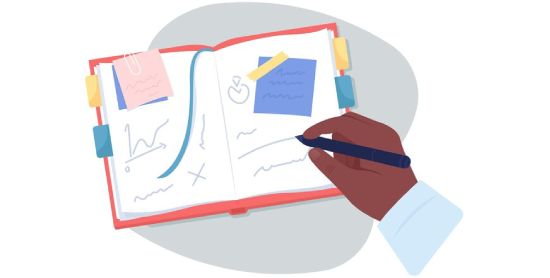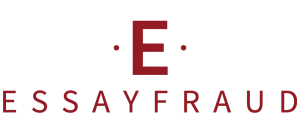Punctuation: Everything you wanted to know about them!
Punctuation marks play a crucial role in written communication, serving as the silent architects that give structure and clarity to our thoughts. They guide readers through the rhythm and flow of a text, enhancing understanding and preventing misinterpretation.
The ubiquitous comma, often underestimated, acts as a traffic signal, signaling pauses and separating distinct elements within a sentence. It grants readers the necessary breathing space, preventing confusion and creating a harmonious reading experience.
Colons and semicolons, though similar in appearance, serve distinct purposes. A colon introduces, while a semicolon connects. The former signals that important information follows, guiding the reader’s focus; the latter links independent clauses, demonstrating a relationship that goes beyond a mere conjunction.

The enigmatic ellipsis, a trio of dots, intrigues with its air of mystery. It signifies omission, creating a sense of anticipation and inviting readers to fill in the blanks with their imagination. Carefully placed, it can infuse prose with suspense or contemplation.
Quotation marks act as guardians of dialogue, encapsulating spoken words and ensuring they are faithfully reproduced. They demarcate the boundary between the narrator’s voice and the characters’ expressions, preventing confusion and adding nuance to storytelling.
Em dashes, the unsung heroes of punctuation, serve multiple functions. They emphasize, interrupt, and even indicate sudden shifts in thought. Their versatility allows writers to inject dynamism into their prose, making it more engaging and expressive.
In the digital age, where brevity is often prioritized, the humble apostrophe plays a vital role. It signifies possession and contraction, condensing words without sacrificing clarity. Its absence can alter meaning, making it a small but potent tool in effective communication.
In conclusion, punctuation marks are the unsung heroes of language, shaping the written word into a coherent and expressive form of communication. Understanding their nuances empowers writers to convey their thoughts with precision, ensuring that the subtleties and nuances of language are faithfully conveyed.
Run and dash
“Run” and “dash” are both verbs that involve swift, rapid movement, but they can have slightly different connotations.
“Run” generally refers to moving quickly on foot, covering a distance at a pace faster than walking. It is a broad term encompassing various speeds, from a casual jog to a full sprint. Running is a fundamental human activity and is used in various contexts, such as sports, exercise, or simply getting from one place to another.
On the other hand, “dash” often implies a quick, spirited movement with a sense of urgency or energy. It suggests a sudden burst of speed, often over a short distance. The word “dash” can convey a more dynamic and forceful motion compared to the more general and sustained action of running.
For example:
- She decided to run a marathon to challenge herself and improve her fitness.
- The cat saw a mouse and made a quick dash across the room to catch it.
While both words describe rapid movement, the choice between “run” and “dash” depends on the specific context and the nuances of speed, distance, and energy you want to convey.
Need help WRITING RESUMES?
Just submit your requirements and choose a resume writer. That’s all we need to write a winning resume for you.
Brackets, braces, and brackets
Punctuation marks, such as brackets, braces, and parentheses, serve as the unsung heroes of written language, providing structure and clarity to our expressions. Brackets [ ] are versatile, often used for editorial comments or additions within a quote. They clarify and enhance understanding, ensuring the seamless integration of supplementary information.
On the other hand, braces { } and parentheses ( ) have distinct roles. Braces, also known as curly brackets, find their home in programming languages, indicating code blocks or grouping related elements. They encapsulate logic and foster order in the world of coding, exemplifying the precision required in this digital realm.
Parentheses, the familiar round brackets, are multi-functional. They set off or emphasize material within a sentence and play a crucial role in mathematical expressions by indicating the order of operations. Their adaptability allows them to guide readers through complex ideas, ensuring that meaning is conveyed with precision.
In the realm of punctuation, these symbols act as silent architects, shaping the landscape of language with their nuanced roles. Whether enclosing a set of numbers, delineating a code block, or indicating the order of operations in a mathematical equation, brackets, braces, and parentheses contribute to the symphony of punctuation, ensuring that written communication resonates with clarity and coherence. Understanding their distinct functions empowers writers to wield these symbols effectively, transforming a mere sequence of words into a well-orchestrated composition.
Apostrophes and Ellipses

Apostrophes and ellipses, though small in size, wield significant influence in the realm of punctuation, each adding a unique flavor to written communication.
Apostrophes (‘):
These diminutive marks serve a dual purpose. Firstly, they denote contractions, seamlessly merging words by indicating omitted letters. “Can’t” succinctly communicates the absence of “cannot,” blending efficiency with clarity. Secondly, apostrophes signify possession, transforming a mundane object into a possessive entity. “The book’s cover” clarifies that the cover belongs to the book, utilizing the apostrophe to navigate the intricacies of ownership.
Ellipses (…) :
In contrast, ellipses, a trio of dots, function as the punctuation of anticipation and omission. They create a sense of suspense, leaving thoughts trailing off into the unknown. In dialogue, ellipses mimic the pauses in spoken language, infusing written text with a reflective or contemplative undertone. “The silence lingered…,” an ellipsis hints at unspoken sentiments, inviting readers to ponder the unsaid.
Quotation mark
Quotation marks, those small but significant punctuation symbols, serve as linguistic signposts in written language. Their primary role is to demarcate direct speech, enveloping the words spoken by an individual within the comforting embrace of these paired symbols. For instance, in the sentence, “The teacher announced, ‘Class, please be seated,'” the quotation marks encapsulate the exact words uttered by the teacher.
Beyond dialogue, quotation marks also find purpose in denoting titles of shorter works—articles, poems, or individual episodes. For example, “The Raven” by Edgar Allan Poe showcases how these marks distinguish a specific literary piece within a broader context.
Furthermore, quotation marks function as linguistic highlighters, emphasizing words or phrases in a distinctive manner. In the sentence, “The term ‘innovation’ is frequently used in business discussions,” the marks draw attention to the specific term under consideration.
Mastering the use of quotation marks is essential for precision in written communication. Their judicious application ensures clarity, preventing ambiguity and accurately conveying the nuances of speech or references to titles and terms. These unassuming symbols, with their ability to encapsulate spoken words and emphasize textual components, play a crucial role in the intricate dance of written expression.
